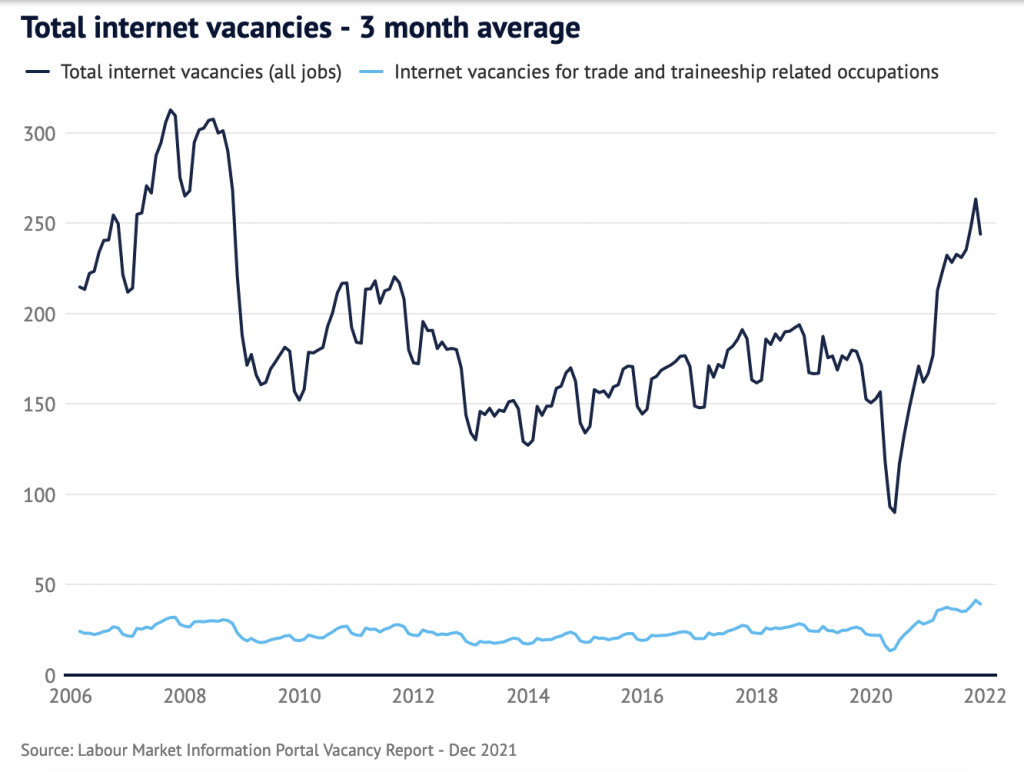Skills & Knowledge you will learn View Details
As election time draws closer, federal ministers are celebrating an uptick in apprenticeships and promising low unemployment rates. But their messaging feels somewhat disconnected from the growing tech talent gap, and the plight of small businesses and startups struggling to find staff.
The number of Aussies in in-training apprenticeships and traineeships hit 347,266 in June 2021, that’s up from 268,215 from June 2020.
In-training trade apprenticeships reached a record high of 217,400 in July 2021.
Minister for employment, workforce and skills Stuart Robert puts this squarely down to the government’s apprenticeship wage support program, first introduced in October 2020 and expanded earlier this year.
As the economy starts to recover post-pandemic, “this is a once in a generation opportunity for Aussies to get into a career that will last a lifetime”, Robert said in a statement.
“We will look back at this period as critical in securing Australia’s workforce.”
Elsewhere, Josh Frydenberg has suggested the government is striving for a Menzies-style model of ‘full employment’, that is, keeping the unemployment rate sustained at below 5%.
While opening The Robert Menzies Institute at Melbourne University on Thursday, Frydenberg reportedly extolled the virtues of “individual aspiration, reward for effort and free enterprise”.
“As we emerge from this crisis, we embrace these principles and now have an opportunity not seen for decades to drive down unemployment even further.”
Sitting at 5.2% for October 2021 — up from 4.6% in September — the unemployment rate is forecast to drop to 4.25% by the end of 2022, and to reach a sustained level of 4% in 2023.
Tech skills gaps are widening
Frydenberg’s speech follows Morrison’s promise of the creation of 280,000 jobs ahead of the Christmas period. But while the jobs may be there, we don’t necessarily have the skilled workers to fill them.
A report from Amazon Web Services and Alphabeta found Australia will require some 6.5 million digital workers by 2025 to meet the demand for tech skills — that’s 79% more than we have today.
Amazon’s AWS Skill Builder program, which allows anyone to access digital skills courses, has already supported some 200,000 Australians since 2017, including people who have been previously disenfranchised or excluded from the workforce.
The skills gap is especially acute in the cybersecurity sector, even as the risk of cyber attacks becomes all the more pertinent.
Data from AustCyber reportedly suggests Australia will need about 7000 additional skilled cybersecurity specialists over the next two years.
According to AustCyber chief executive Michelle Price, there may be between 100,000 and 150,000 vacancies for indirect cyber security workers who need some level of knowledge in order to do their jobs safely.
That’s a shortage that could hit small businesses hard.
Susie Jones, co-founder and chief executive of cyber security startup Cynch Security, tells SmartCompany there are already “so few” cyber security specialists catering to small businesses in the market — far fewer than are needed — and that gap is only getting wider.
“Business owners need to take control of their cyber risks themselves and educate themselves on better tech behaviours and solutions,” she advises.
At the same time, she would like to see both state and federal governments incentivising workers from other industries that are not facing the same challenges to transition into the industry, learning new skills and bringing their existing ones with them.
“Opening up immigration again will also go a long way to helping reduce the impact of the problem,” she adds.
All of this comes as Australian businesses grapple with the threat of The Great Resignation, which is seeing more workers considering a change in career.



